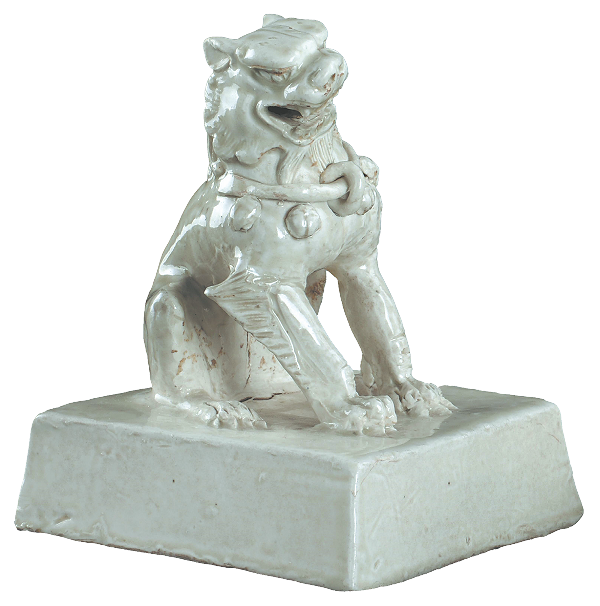

Pure and Infinite reflects the eminent status Hebei enjoyed in white ware production. It was home to the Xing kiln, which rose to become a key hub of white porcelain during the Tang Dynasty, the Ding kiln — one of the Five Great Kilns of the Song Dynasty (960-1279) — the Cizhou kiln, and the Jingxing kiln.
One vivid example of Ding ware on show at Pure and Infinite is a flask from the Northern Song Dynasty (960-1127).
The pot, which stands 15 centimeters in height, is made in the shape of a small, cheerful boy riding a goose. Water is poured in through a hole on the back of the boy's head, and exits through the goose's mouth, and the boy's left arm posed on his waist serves as the handle.
An elevated pillow from the Yuan Dynasty (1271-1368) illustrates one of the distinctive features of Cizhou ware — black patterns against a white background — which lends it a simple beauty.
Wang says that in the final stages of the Tang Dynasty, white porcelain shifted southward, as kilns in Jingdezhen, Jiangxi province, began production. Later, during the Ming and Qing (1644-1911) dynasties, Dehua white raised the artistry of white ware to new heights, as evinced by its commercial success as part of the prosperous maritime trade between China and the world.